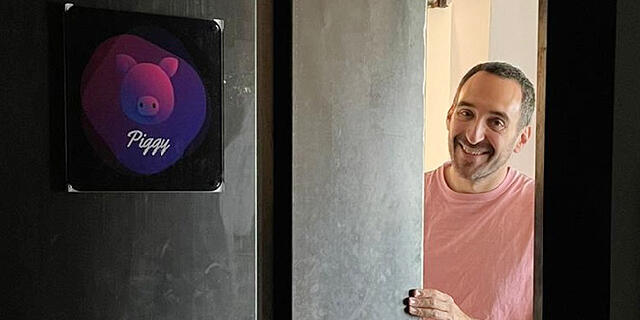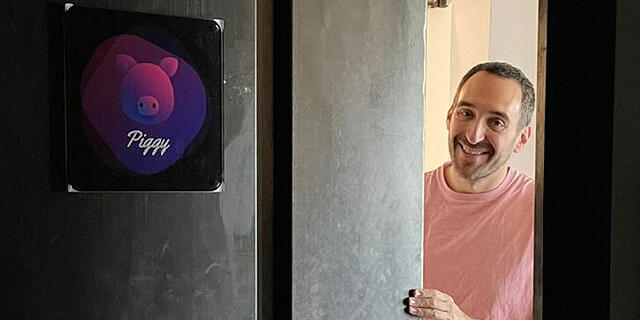
Round B
Hop on the bandwagon or stay the course? A startup’s dilemma
While it’s tempting to drop everything and follow the twinkling star in the market’s sky at a given moment, Shaul Olmert warns startups that trends sometimes disappear as quickly as they appear
Most startup companies begin with a long or less long phase known as the "development phase". They work on an initial product, and in the time frame until it meets the market, they rely on research, interviews with potential customers, evaluations and gut feelings. At this stage, as well as in later stages, it is very important to listen to the market, to follow competitors, read the analyses and forecasts of experts, and try to assess not only what is happening in the market today, but also what is to come. In this confusing phase, signals coming from the market are one of the main sources of information available to us, but they can also be very confusing.
About two years ago, at Piggy, we started developing our product, a system for creating content from the mobile phone. At about the same time, a strong buzz began in the market around the "creator economy", and specifically around a new product that gained momentum and received huge interest from investors and leading companies in the market - a personal content page known as Linkin.bio. The Linktree company, which allows end users to easily build a personal page and link to it from their bio page in social networks, gained rapid popularity and raised no less than $162 million at a company value of almost two billion dollars. The growing popularity of their product caused many companies to follow suit, and we too were quick to check the possibility of jumping on the bandwagon. Some of our investors drew our attention to the emerging trend, and some even argued that we should concentrate on allowing users of our product to create their own Linkin.bio, and abandon all other current capabilities of our product.
This past summer, less than a year after Linktree's monumental capital raising, the company announced a 17% reduction in its workforce, and according to expert estimates, its real value is less than half of the value set for it in March. This does not mean that the creator economy is dead or that there is no place in the market for this type of product, a system for creating a Linkin.bio, but it probably means that if we had really dropped everything and followed the trend at that moment, today we would be forced to recalculate our course. It's tempting to flock to the twinkling star in the market sky at a given moment, but you also have to remember that trends sometimes disappear as quickly as they appear.
Back during our development period, another trend emerged that overnight became the talk of the day in the industry, the flagship of the blockchain, the NFT. This is a digital signature that identifies a certain file as "original" and allows it to be sold. Immediately, celebrities emerged who produced "original" digital files from their own photos, or unknown creators who made a picture of a monkey and sold it for millions of dollars as if it were the original canvas on which da Vinci painted the Mona Lisa. Funds were established to invest in NFT creations, thousands of companies listed digital assets they own on NFT exchanges, and the entire market was abuzz for a few months. In the end, the value of digital currencies decreased, the whole market balanced out, and the crazy hype surrounding NFTs also died down. Thousands of companies that built their business on this trend were left with nothing but scraps in their hands (alongside a few that were successful of course), and we were very lucky that we knew better than to flock to the new trend and not be one of them.
The need to identify emerging trends and ride them is natural and important. We must not close our eyes to what is happening in the market, especially in the early stages when we still do not have feedback from customers. Market trends are one of the only factors in our ability to receive signals and direct our product according to them. However, it is also important to know not to get carried away and to remember that not all that glitters is really gold. The Linkin.bio and NFT examples illustrate this.
And opposed to these examples, a few months ago a new wave began to sweep the industry, and this time it seems that our alarm bells should be ringing. The use of GPT technology, and the availability of open protocols for use by companies such as OpenAI, allows to leverage artificial intelligence engines to quickly generate texts, images and videos based on a string of text. This has been collectively called Generative AI. As in the previous trends I presented, here too thousands of companies suddenly began to rebuild their products around the new hot trend, and here too some of our investors began pressuring us to ride the wave quickly. And this time, in contrast to the two previous trends, it seems that there is indeed a huge potential here for us and we are in a hurry to try and integrate the use of this technology in our product, which in the meantime has already been launched and is out of the development phase.
So why in this case did we go for it and in previous cases not? The simple answer is that we feel that here the potential and alignment with our vision is much higher.
And how do you know? How can you tell when it's hype and when it's the real thing? There are no rules for this. It's a combination of gut feeling, loyalty to the original focus and vision of the company, trial and error, and ultimately making a decision on what kind of business you want to have. There will be those who bet big on Linkin.bio or NFT and win big, and there will be those who, like us, bet on Generative AI and may lose their shirt. We hope not to be among them, and we take this bet with a feeling that it is right for us.
In my next post I will share and present the use we make of this innovative technology, and it is likely that over time our product will change and take new directions. And it is also likely that in a few months new trends will emerge. Tech news headlines will claim that it is the "next thing". Some of our investors will swear to us that we should drop everything and concentrate only on it, and we will once again be faced with the dilemma: whether to bet on the emerging trend or stay true to our way of doing things. And as mentioned - there is no right and certain answer here. You have to choose carefully and deeply understand that just because something gets headlines and interest doesn't necessarily make it right, and what's more - not necessarily right for us.
But if after thinking, testing, experimenting and wondering, the feeling that remains with us is that this thing is “the glue” as far as we are concerned, we should take the risk and steer the ship in this direction. A startup is, after all, an experimental laboratory and you have to take risks and follow what your faith and research points to as being the right direction. Where exactly is the fine line between listening to market noises and blindly following trends - unfortunately it is impossible to build an algorithm for this.
Shaul Olmert is a serial entrepreneur and the co-founder and CEO of mobile app developer Piggy. He formerly founded interactive content company Playbuzz Ltd. You can find his previous columns here.















